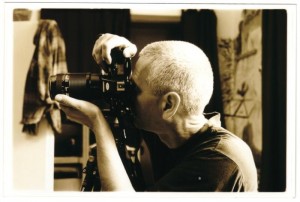BÉLA KÁSA
Photographer

Béla Kása was born in Pécs, Hungary, in 1952. He completed his education in Germany, where his family was living since 1965. He received his diploma in artistic photography in Köln (Cologne) in 1979. He worked for Stern and GEO, the largest magazines of Europe. Since 1982 he is living in Hungary, where he is taking photographs of folk music bands and musicians for their albums and advertisements. He had exhibits in various cities in Hungary, Austria, Denmark and the United States.
He became familiar with photography, while still in High School, in Kastl, Germany. A friend took Béla to his darkroom and demonstrated, how a picture is developed. (This friend was László Maczky, whose photographs were exhibited at our Museum in 1985.) He started to take pictures himself, and today he is an accomplished photographer.
The change in his view of life occurred when he traveled to Erdély (Transylvania). The people, the traditions, the music had an enormous impact on him. He started to play and collect folk music, and photograph the musicians. His goal is to record an enchanting way of life, which is disappearing, for his children and the generations to come.
His portraits are taken on location in their natural surroundings. According to Béla Kása, his photos are born in the mind, heart and soul. His aim is to immortalize interesting personalities and faces and portray those honest feelings which exist in every human being.
Our Museum exhibited a collection of his artistic, informative and illustrative black and white photographs, which may be regarded as the most significant Hungarian ethnophotographic study in recent years. From the 1970’s, Kása has spent years living with and befriending the subjects of these images. He was able to record historically important photos. These musicians are the most significant personalities and the last documented bridges of traditional Hungarian village folk music from Transylvania and Hungary. Most of these famous informants have passed away, but their legacy stayed in their musical recordings. The ethnophotographic study of KÁSA becomes an important visual supplement, and at the same time artistic documentary of the exciting Hungarian musical tradition.
American Hungarian Museum, 1998
